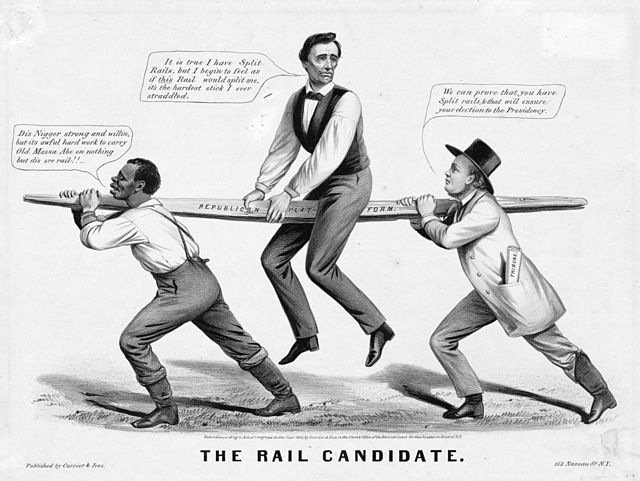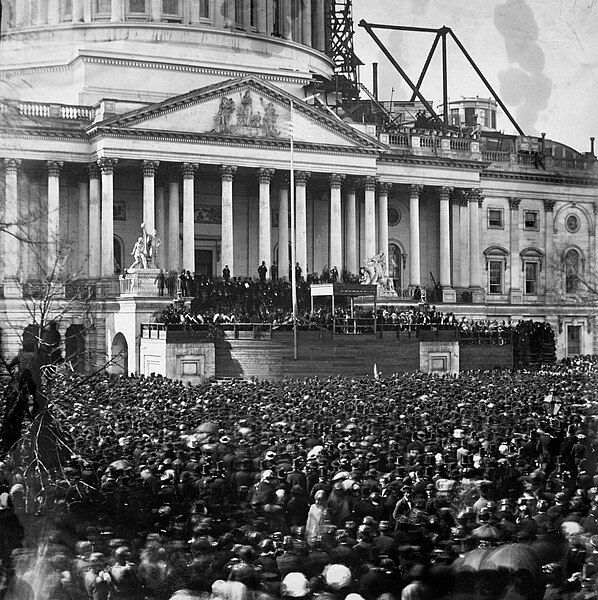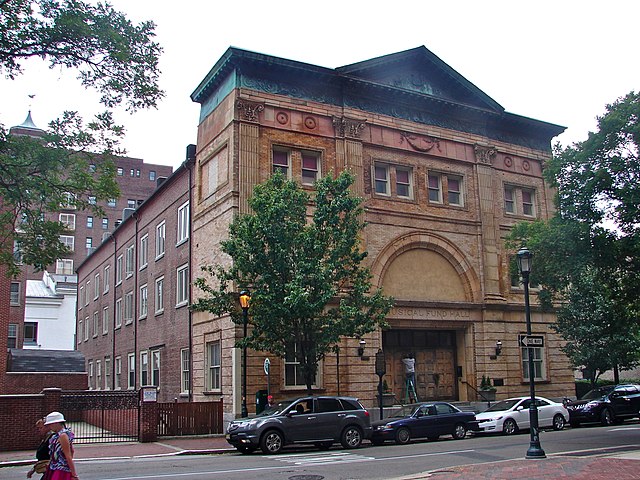Presidency of Abraham Lincoln
The presidency of Abraham Lincoln began on March 4, 1861, when Abraham Lincoln was inaugurated as the 16th president of the United States, and ended upon his assassination and death on April 15, 1865, 42 days into his second term. Lincoln was the first member of the recently established Republican Party elected to the presidency. Lincoln successfully presided over the Union victory in the American Civil War, which dominated his presidency and resulted in the end of slavery.
Presidency of Abraham Lincoln
"The Rail Candidate", a Currier and Ives illustration depicting Abraham Lincoln's 1860 presidential candidacy held up by the slavery issue with a slave on the left and party organization on the right.
The March 4, 1861, inauguration of Abraham Lincoln in front of the U.S. Capitol Building
Headlines on the day of Lincoln's inauguration portended hostilities with the Confederacy, Fort Sumter being attacked less than six weeks later.
Republican Party (United States)
The Republican Party, also known as the GOP, is one of the two major contemporary political parties in the United States. It emerged as the main political rival of the Democratic Party in the mid-1850s.
The Republican Party hosted its first Republican National Convention at Musical Fund Hall at 808 Locust Street in Philadelphia from June 17 to 19, 1856, nominating John C. Frémont as its presidential candidate in the 1856 presidential election.
Charles R. Jennison, an anti-slavery militia leader associated with the Jayhawkers from Kansas and an early Republican politician in the region
Abraham Lincoln, the 16th president (1861–1865) and first Republican to hold the office
Ulysses S. Grant, the 18th president (1869–1877)








